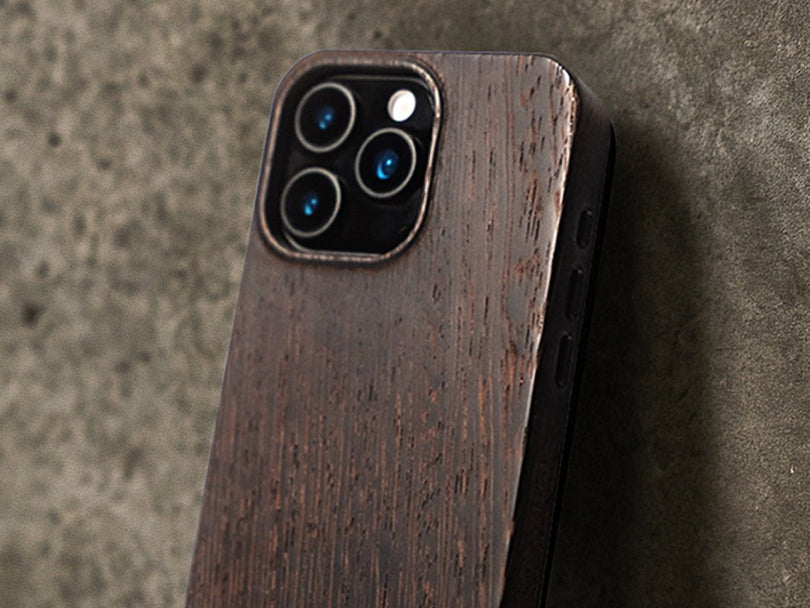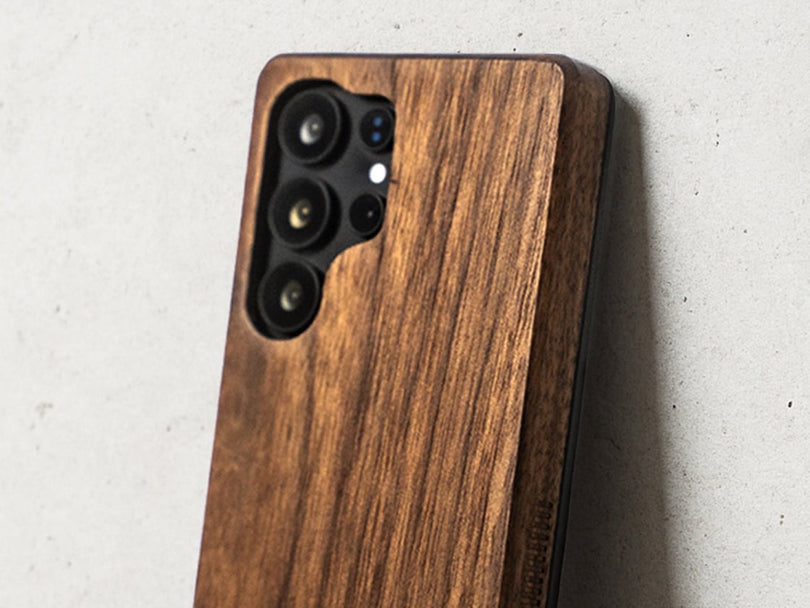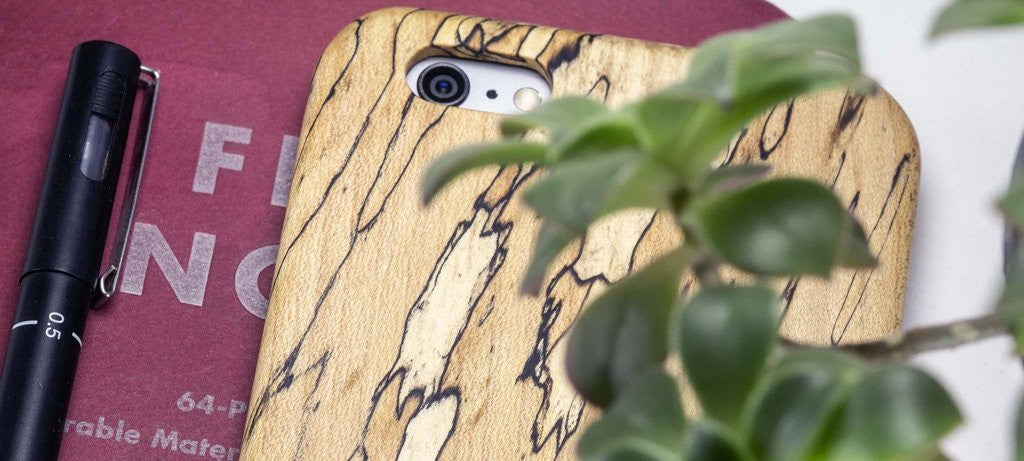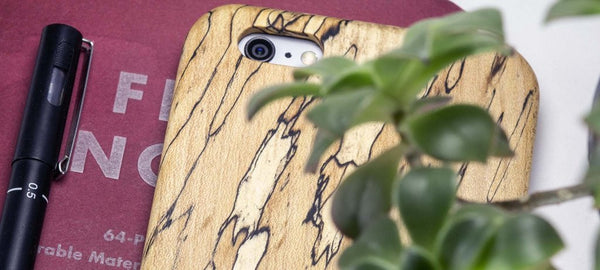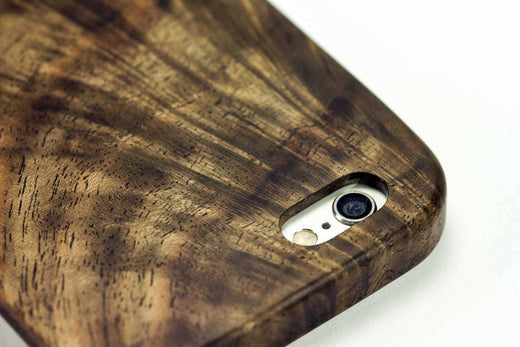In order to craft the best handmade wood iPhone and Pixel cases possible, KerfCase offers a wide variety of wood species, some of which incorporate unique features that are especially prized. If you're not a woodworker, but you want to learn more about what makes some wood cuts (and some cases) especially beautiful, enjoy our four-part series on unique wood features!
Part 2: Figured Wood | Part 3: Burl Wood | Part 4: Chatoyancy
No two pieces of wood are alike. One of the great joys of working with wood is knowing that no matter if you're carving a Greek god or nailing together a bookshelf, your creation will be 100% unique. Like snowflakes and fingerprints, the grain pattern that forms in trees never perfectly repeats, so each board will have its own unique appearance.
This uniqueness exists on a spectrum; many cuts of wood look almost alike, the differences only perceptible to a seasoned viewer, or a microscope. For craftsmen looking for uniformity across a large project, this is a good thing. But we at KerfCase are specialty woodworkers, looking for the most unique and interesting pieces of wood around to use in our truly one-of-a-kind cases. So let's take a look at the special things that we look out for in our wood selection, starting with spalting.
What is Spalting?

Why does spalted walnut look so different from regular walnut (and why does it cost more?)
Decomposition is a part of life, and often a dirty, stinky, or gross part. We don't usually associate the act of rotting with anything pleasant, but aside from spoiled milk and bad meat, many of the greatest things in life come from fungus and bacteria breaking down living tissue. I'm talking about things like cheese, bread, chocolate, and beer, none of which would be possible without the help of a little controlled decomposition. Spalting is a part of this proud tradition, because wood that is spalted is technically rotting from a fungal infestation.
When certain fungi encounter wood, they slowly infiltrate the wood grain, absorbing nutrients and leaving behind telltale signs. There are three different types of spalting, each corresponding to a different fungus type or process.
Pigmentation
A fungus spreads through part of the wood, leaving behind a discolored area from reactions between the fungus and the wood. These shapes are usually amorphous, and because color spots can vary in color and size (and overlap), you can get a lot of unpredictable patterns from this spalting type.

Our spalted beech case shows off a large pigmented section running down the side. The Phantom of the Opera would be proud!
White Rot
This process is similar to pigmentation, but in reality the opposite happens. In this case, the fungus actually eats the part of the wood's cell wall that produces pigment! The wood cells get "bleached", producing white spots that can interact beautifully with the wood grain, and with other types of spalting.
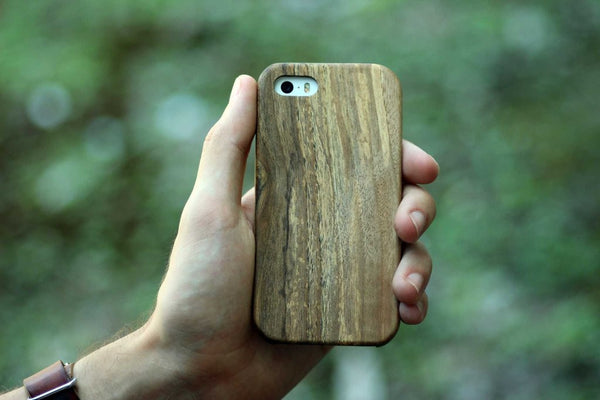
Our spalted walnut reliably has some good white rot patterns, along with interesting pigmentation. Email us to see our current stock!
Zone Lines
My favorite of the three, zone lines happen when various fungi enter into a "turf war." The solid black lines delineate the edges of a fungal territory, and indicate a defensive cellular structure put up to keep out competitors. Even cooler, these lines may enclose areas with pigmentation or white rot, so you can see exactly how the fungus spread through the wood!

We're very proud of our spalted maple supply, which offers truly striking zone line patterns and sometimes enclosed pigmented zones. Let me know if you'd like to see what your case could look like by viewing our stock!
Tricks of the Spalting Trade
Spalting is highly sought after for its beauty and uniqueness, but working with spalted wood can be tricky. Like a piece of fruit that's been infested with mold, spalted wood has a weaker structure than a wood that has not been eaten by a fungus, and if you wait too long for a cool pattern, you might end up with a wood that falls apart in your hands. At KerfCase, we stabilize our spalted wood in a strengthening compound so that you don't have to pick between beautiful wood and sturdy wood!
Like the controlled fermentation involved in brewing beer or kombucha, it's possible to induce spalting in a controlled environment to get your own supply of beautiful wood. Our spalted maple supplier "seeds" his maple boards with the necessary fungus and gives them the light, humidity, and time (over a year!) to let them work their magic. We're particularly proud of the cases we make from this species, as a visit to our Instagram will attest. Our sales reports tell us that you really like them too!

Sometimes we get truly unique cuts, like this spalted maple that features beautiful spalting interacting with a knot. We send these out to lucky customers, but if you contact us, you might find something special and claim it for yourself!
How to Get Your Dream Case
Given how different two spalted cases may end up being, when you order a KerfCase it'll never look exactly like the picture. Fortunately, it's fun to help pick the one you like the best for your next case! One of my favorite parts of my job is showing customers their grain options between purchase and carving, so drop me a line or message us on Facebook if you'd like to see our selection and pick the grain pattern (and spalting!) that's perfect for you. I'd be happy to show you our coolest cuts.
Tune in next week for a primer on our next wood feature, figured wood!
Phil Giammattei likes to wear lots of different hats. Formerly employed at Apple, Google and Oracle, he loves applying his technical knowledge to making the best possible custom wooden phone cases. In addition to writing the Kerf Blog, Phil’s duties at KerfCase include customer service, sales, production, shipping and fulfillment, and anywhere else he can be helpful. Reach out to say hi and find out what choice cuts we have in stock!

